Postcards from the florida republic
An independent and profitable state of mind.
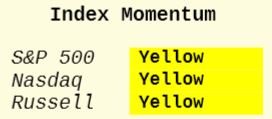 In 2009, my friend and I sat down at Cactus, a traders’ bar in the shadow of the Chicago Mercantile Exchange.
In 2009, my friend and I sat down at Cactus, a traders’ bar in the shadow of the Chicago Mercantile Exchange.
There, we drank Rumple Minze and wrote ideas for an absurdist lifestyle book called:
“How to Be Awesome and Get People Talking.”
The book’s premise was simple.
In the Chicago Loop, strangers liked to brag about their wealth. They drive fancy cars to try to attract attention. They’d talk really loudly about trades they’d made… or what they drank.
That really wasn’t our style. We were “beer and a shot” kind of guys, fans of dive bars, darts, and a great Bimini Ring Toss game.
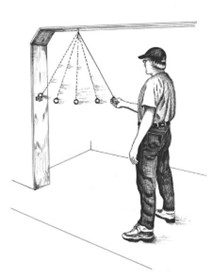 Some people seem to miss the big picture in a world of wealth-obsessed vanity.
Some people seem to miss the big picture in a world of wealth-obsessed vanity.
Those cars and clothes are nice, but there’s a line too many people cross - the line between arrogant and exciting.
Want to meet people? You need good stories, good characters, and ways to make your fun. I’ve long found that people are drawn to individuals who are making the best of every situation, enjoying their lives, and welcoming strangers. You don’t need to be loud.
Get them interested. Make them laugh. Make the times memorable.
Our book’s concept didn’t take itself too seriously – neither should we.
But we could stand out in a world that felt too rigid after the Great Financial Crisis. Last night, I found those notes in an old computer file while researching this article.
It’s funny and features a few key lessons on life that I carry to this day, and they carry a lesson for investors, too…
I Follow a Few (Very) Simple Rules
They include:
- Never be the person without a chair when the music stops.
- In any social situation, always have an exit plan.
- Always have a networking mindset; ask what you can do to help someone else.
- Buy wedding gifts for which the couple didn’t register. Research the couple and make the gift personal. They don’t need a high-end blender – nobody really does.
We never wrote this book.
But it brings back memories and a reminder of great ideas.
Instructions on life and ways to initiate a conversation…
Notes on why you should always carry a sportcoat and foreign currency…
Why you should take a day off work to celebrate a foreign country’s major sporting event…
The importance of sturdy coasters…
Why you should learn to play bizarre instruments…
And, of course, always knowing who would play you in a movie.
There are seven pages of notes; be assured you’ll hear about many of these things in Postcards soon.
I haven’t changed much in how I approach life… but I always change up the way I tackle the markets.
That said, I found something else in that 2011 folder that we need to discuss.
Fair warning: It’s about the housing market.
Housing, the Fed, and BlackRock’s Gold Rush
On Tuesday, I discussed the institutional rot that will keep most Gen-Z Americans out of the housing market. By 2030 institutional investors could own roughly 40% of the single-family housing market.
In this economy, Things are so absurd that homebuilders are creating “Rental communities.” JPMorgan Asset Management is now investing in a single-family construction community that won’t sell homes to younger Americans.
It will be rent-only – a testament to the never-ending goal of global financiers: You’ll own nothing and be happy.
They’re not the only ones involved in these schemes.
It’s a big business. The cash flow is attractive. Since the American family's number one balance sheet item is rent or the mortgage – banks have their eyes on this one.
It’d be easy to yell at the banks.
But here’s the problem: None of this would be possible without the Federal Reserve. Because the Fed – which once aimed its interventions at housing market stability – has actually driven the distortions over the last decade.
They’re not alone, of course. For those who don’t know, mortgage-backed securities (MBS) are a grotesque Wall Street creation.
An MBS pools together a group of mortgages and converts them into tradable security. This allows investors to earn returns based on the interest and principal payments from the underlying mortgages. Sounds good at first…
But when you add in a lot of toxic mortgages, things can go wrong when homeowners default. That happened in 2007 and 2008, and it brought down the financial markets in the Great Crash.
Vowing to restore order and stabilize the housing market, the Fed intervened in the MBS market – just as it did as the last-resort buyer of U.S. bonds. That’s where all my graduate research came into play. I found several Fed speeches by Ben Bernanke, dated 2010 and 2011, in the folder.
I started to read them. It’s unbelievable to look back and realize 1) how misleading Bernanke was; and 2) how easily the market believed his nonsense.
In 2010, this chart showed that the Fed had expanded its balance sheet to nearly $1.2 trillion in MBS to stabilize the housing market.
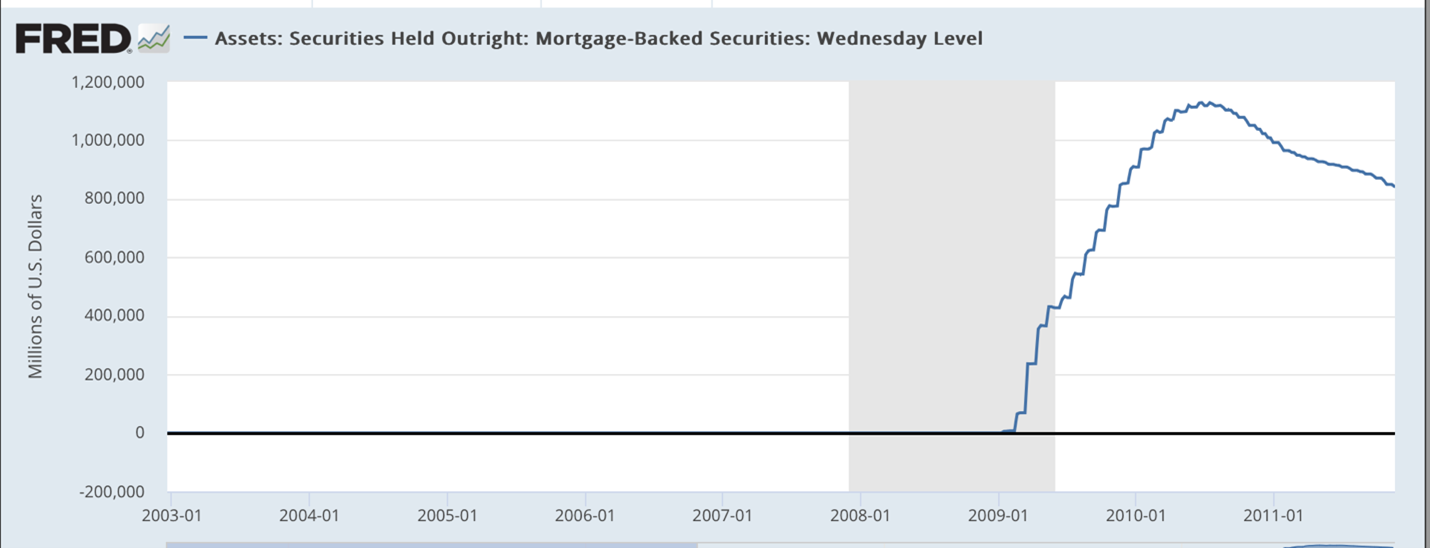
A year later, that figure fell under $900 billion. These measures were supposed to be temporary, as then-Fed Chair Ben Bernanke promised. At the time, Bernanke argued that the central bank would unwind these positions and restore order to the free system.
That’s Not What Happened
After that dip in late 2011, the chart tells you everything about the “capitalism” as it existed in America. Over the next decade, as the bond markets screamed and housing started to tremble in 2012 and 2020, the Fed went bigger… and bigger.
By mid-2022, while inflation was still hot, the Fed was still buying MBS securities.
MBS holdings increased to a staggering $2.8 trillion.
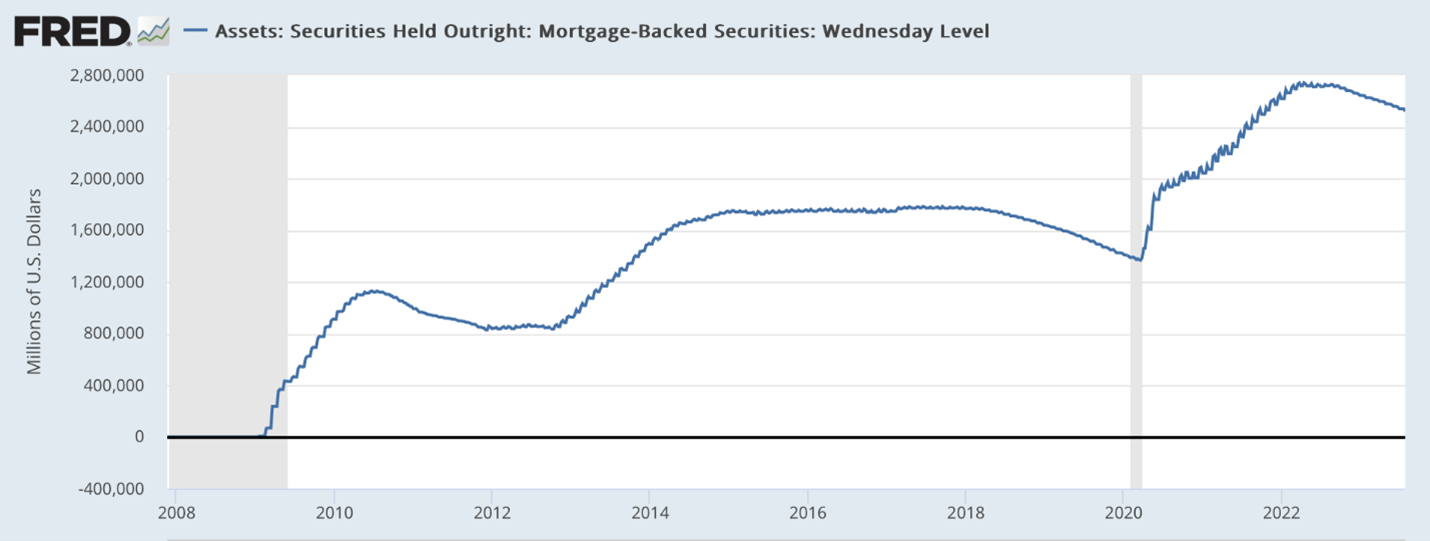
Some might think it’s good that the Fed was working to stabilize the economy.
But all of this came at a cost.
Look at the Fed’s balance sheet expansion on MBS over the last decade. This chart tracks the MBSs on the Fed sheet and the FHFA House Price Index through 2021…
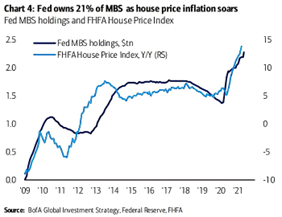
Can you see the problem in one chart?
All that intervention helped keep interest rates low and turbocharged the asset prices.
When the Fed dove headfirst into MBS in 2020, it nearly doubled its asset holdings. And even in the face of high inflation (transitory inflation), it was still buying the same month that it increased interest rates for the first time in years.
Add in a frenzy of buyers, and you get this.
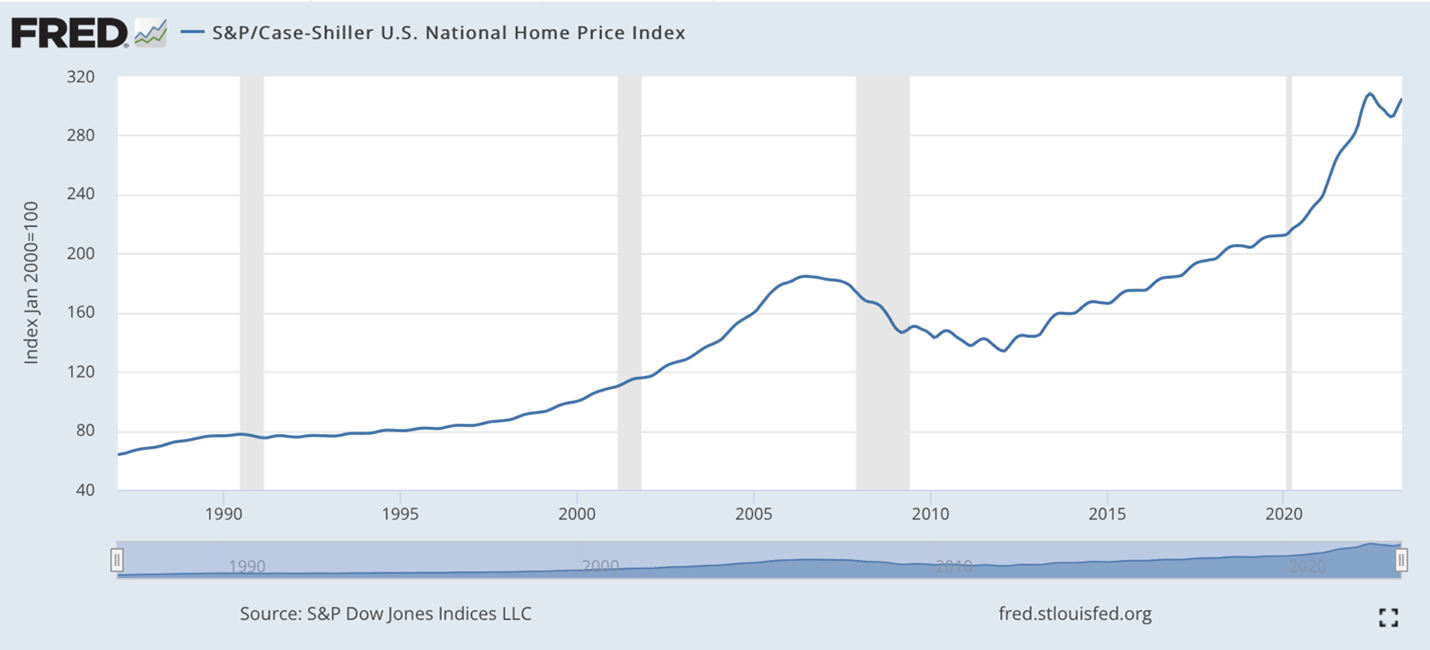
It’s okay to admit it.
The Fed did this.
The Fed Isn’t Our Friend
If you bought a house in the last few years, the Federal Reserve likely owns a mortgage-backed security with your loan bundled into it.
Seems healthy… right?
Here’s the issue. While the Fed was buying up all that paper to stabilize the financial markets… it subsidized mortgage rates and helped fuel speculation.
So, how did we get here? That involves a very important term called “Financialization.”
I’ll talk more about this term soon… This weekend, I’ll also tell you about the key year that set our entire economic disorder in motion – and five specific events in 1993.
 Stay positive,
Stay positive,
Garrett Baldwin
About the Author
Garrett Baldwin is a globally recognized research economist, financial writer, consultant, and political risk analyst with decades of trading experience and degrees in economics, cybersecurity, and business from Johns Hopkins, Purdue, Indiana University, and Northwestern.



